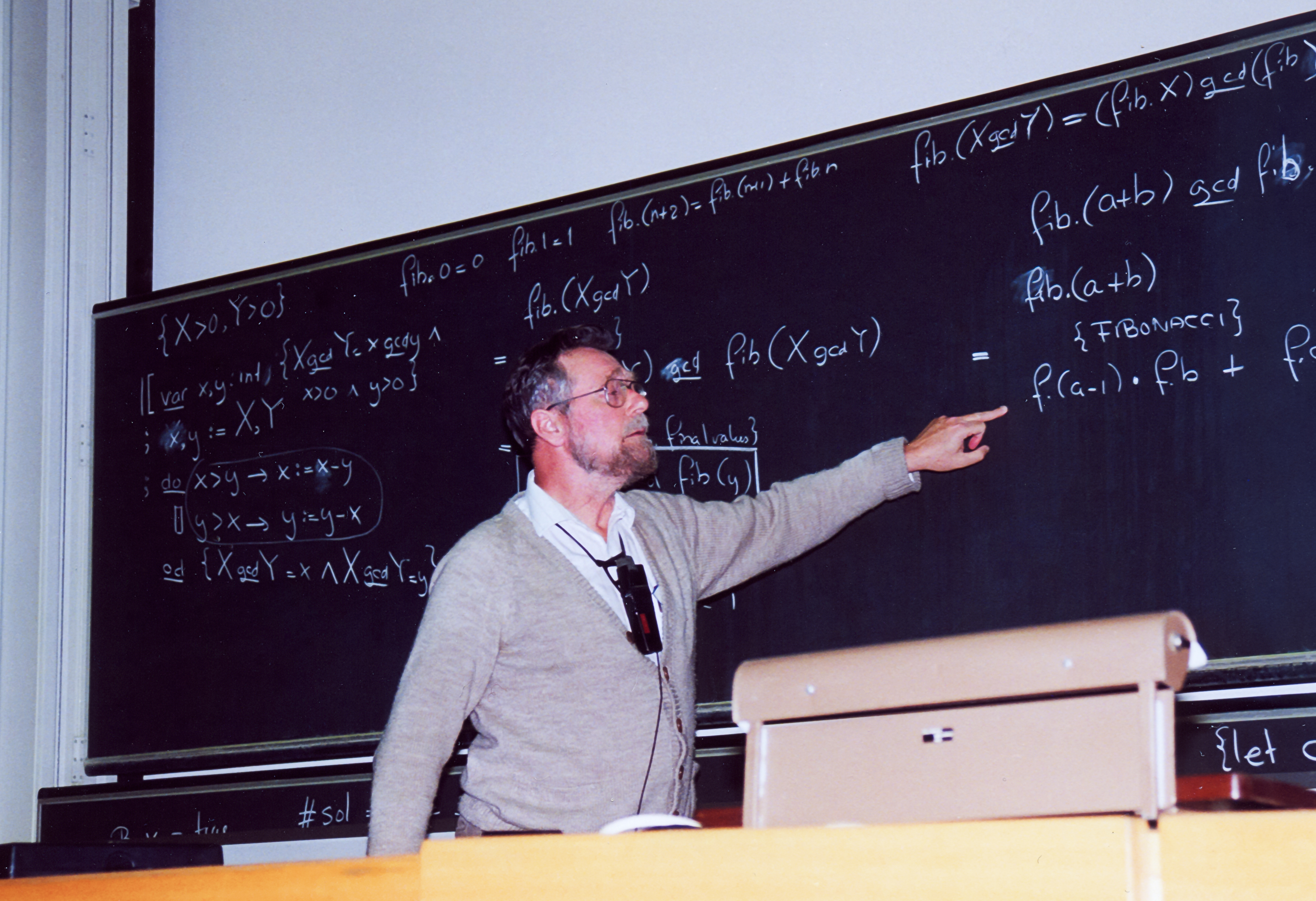|
Hans-Thilo Schmidt
Hans-Thilo Schmidt (13 May 1888 – 19 September 1943) codenamed Asché or Source D, was a German spy who sold secrets about the Enigma machine to the French during World War II. The materials he provided facilitated Polish mathematician Marian Rejewski's reconstruction of the wiring in the Enigma's rotors and reflector; thereafter the Poles were able to read a large proportion of Enigma-enciphered traffic. He was the younger brother of Wehrmacht general Rudolf Schmidt. Selling Enigma secrets A former officer, Schmidt had been forced to leave the army having suffered from gas during the First World War.May, Ernest ''Strange Victory'', New York: Hill & Wang, 2000 page 135. His brother, Rudolf Schmidt, secured him a civilian post at the German Armed Forces' cryptographic headquarters, the Cipher Office. Shortly after the military version of the Enigma machine was introduced, he contacted French intelligence and offered to supply information about the new machine. His offer w ... [...More Info...] [...Related Items...] OR: [Wikipedia] [Google] [Baidu] |
French Third Republic
The French Third Republic (, sometimes written as ) was the system of government adopted in France from 4 September 1870, when the Second French Empire collapsed during the Franco-Prussian War, until 10 July 1940, after the Fall of France during World War II led to the formation of the Vichy France, Vichy government. The French Third Republic was a parliamentary republic. The early days of the French Third Republic were dominated by political disruption caused by the Franco-Prussian War of 1870–1871, which the French Third Republic continued to wage after the fall of Emperor Napoleon III in 1870. Social upheaval and the Paris Commune preceded the final defeat. The German Empire, proclaimed by the invaders in Palace of Versailles, annexed the French regions of Alsace (keeping the ) and Lorraine (the northeastern part, i.e. present-day Moselle (department), department of Moselle). The early governments of the French Third Republic considered French Third Restoration, re-establi ... [...More Info...] [...Related Items...] OR: [Wikipedia] [Google] [Baidu] |
Codename
A code name, codename, call sign, or cryptonym is a code word or name used, sometimes clandestinely, to refer to another name, word, project, or person. Code names are often used for military purposes, or in espionage. They may also be used in industrial counter-espionage to protect secret projects and the like from business rivals, or to give names to projects whose marketing name has not yet been determined. Another reason for the use of names and phrases in the military is that they transmit with a lower level of cumulative errors over a walkie-talkie or radio link than actual names. Origins Achaemenid Empire The Achaemenid Empire under Darius I employed a network of spies called the King’s Eye or the King’s Ear. These agents operated under anonymity, and “King’s Eye” was not a specific person but rather a code name for the intelligence network that reported directly to the king. Punic Wars The Carthaginian general Hannibal Barca reportedly used coded re ... [...More Info...] [...Related Items...] OR: [Wikipedia] [Google] [Baidu] |
Rodolphe Lemoine
Rudolph or Rudolf may refer to: People * Rudolph (name), the given name including a list of people with the name Religious figures * Rudolf of Fulda (died 865), 9th century monk, writer and theologian * Rudolf von Habsburg-Lothringen (1788–1831), Archbishop of Olomouc and member of the House of Habsburg-Lorraine Royalty and nobility *Rudolph I (other) *Rudolph II (other) *Rudolph III (other) * Rudolph of France (died 936) * Rudolph I of Germany (1218–1291) * Rudolf II, Holy Roman Emperor (1552–1612) * Rudolph, Prince of Anhalt-Zerbst (1576–1621) * Rudolf, Crown Prince of Austria (1858–1889), son and heir of Emperor Franz Joseph I of Austria and Empress Elisabeth of Austria (died at Mayerling) Places * Rudolph Glacier, Antarctica * Rudolph, South Dakota, US * Rudolph, Wisconsin, US, a village * Rudolph (town), Wisconsin, adjacent to the village * Rudolf Island, northernmost island of Europe * Lake Rudolf, now Lake Turkana, in Kenya Ar ... [...More Info...] [...Related Items...] OR: [Wikipedia] [Google] [Baidu] |
Battle Of France
The Battle of France (; 10 May – 25 June 1940), also known as the Western Campaign (), the French Campaign (, ) and the Fall of France, during the Second World War was the Nazi Germany, German invasion of the Low Countries (Belgium, Luxembourg and the Netherlands) and French Third Republic, France. The plan for the invasion of the Low Countries and France was called (Case Yellow or the Manstein plan). (Case Red) was planned to finish off the French and British after the Dunkirk evacuation, evacuation at Dunkirk. The Low Countries and France were defeated and occupied by Axis troops down to the Demarcation line (France), Demarcation line. On 3 September 1939, French declaration of war on Germany (1939), France and United Kingdom declaration of war on Germany (1939), Britain declared war on Nazi Germany, over the German invasion of Poland on 1 September. In early September 1939, the French army began the limited Saar Offensive but by mid-October had withdrawn to the start line ... [...More Info...] [...Related Items...] OR: [Wikipedia] [Google] [Baidu] |
Signals Intelligence
Signals intelligence (SIGINT) is the act and field of intelligence-gathering by interception of ''signals'', whether communications between people (communications intelligence—abbreviated to COMINT) or from electronic signals not directly used in communication (electronic intelligence—abbreviated to ELINT). As classified and sensitive information is usually encrypted, signals intelligence may necessarily involve cryptanalysis (to decipher the messages). Traffic analysis—the study of who is signaling to whom and in what quantity—is also used to integrate information, and it may complement cryptanalysis. History Origins Electronic interceptions appeared as early as 1900, during the Boer War of 1899–1902. The British Royal Navy had installed wireless sets produced by Marconi on board their ships in the late 1890s, and the British Army used some limited wireless signalling. The Boers captured some wireless sets and used them to make vital transmissions. Since the ... [...More Info...] [...Related Items...] OR: [Wikipedia] [Google] [Baidu] |
PC Bruno
''PC Bruno'' was a Polish– French–Spanish signals–intelligence station near Paris during World War II, from October 1939 until June 1940. Its function was decryption of cipher messages, most notably German messages enciphered on the Enigma machine. ''PC Bruno'' worked in close cooperation with Britain's decryption center at Bletchley Park. History In the early 1930s, French military intelligence acquired operation manuals and sample messages for the German Enigma cipher machine. French intelligence officer Captain Gustave Bertrand supplied this material to Poland's ''Biuro Szyfrów'' ("Cipher Bureau"), which used it as part of their successful effort to break Enigma. In July 1939 the ''Biuro Szyfrów'' gave French and British intelligence all their results. Both countries were expanding their decryption efforts in anticipation of war, and this continued after the war started in September 1939. When Poland was overrun by Germany and the Soviet Union, the key staff of ... [...More Info...] [...Related Items...] OR: [Wikipedia] [Google] [Baidu] |
Formula
In science, a formula is a concise way of expressing information symbolically, as in a mathematical formula or a ''chemical formula''. The informal use of the term ''formula'' in science refers to the general construct of a relationship between given quantities. The plural of ''formula'' can be either ''formulas'' (from the most common English plural noun form) or, under the influence of scientific Latin, ''formulae'' (from the original Latin). In mathematics In mathematics, a formula generally refers to an equation or inequality relating one mathematical expression to another, with the most important ones being mathematical theorems. For example, determining the volume of a sphere requires a significant amount of integral calculus or its geometrical analogue, the method of exhaustion. However, having done this once in terms of some parameter (the radius for example), mathematicians have produced a formula to describe the volume of a sphere in terms of its radius: ... [...More Info...] [...Related Items...] OR: [Wikipedia] [Google] [Baidu] |
Key (cryptography)
A key in cryptography is a piece of information, usually a string of numbers or letters that are stored in a file, which, when processed through a cryptographic algorithm, can encode or decode cryptographic data. Based on the used method, the key can be different sizes and varieties, but in all cases, the strength of the encryption relies on the security of the key being maintained. A key's security strength is dependent on its algorithm, the size of the key, the generation of the key, and the process of key exchange. Scope The key is what is used to encrypt data from plaintext to ciphertext. There are different methods for utilizing keys and encryption. Symmetric cryptography Symmetric cryptography refers to the practice of the same key being used for both encryption and decryption. Asymmetric cryptography Asymmetric cryptography has separate keys for encrypting and decrypting. These keys are known as the public and private keys, respectively. Purpose Since the key ... [...More Info...] [...Related Items...] OR: [Wikipedia] [Google] [Baidu] |
Equation
In mathematics, an equation is a mathematical formula that expresses the equality of two expressions, by connecting them with the equals sign . The word ''equation'' and its cognates in other languages may have subtly different meanings; for example, in French an ''équation'' is defined as containing one or more variables, while in English, any well-formed formula consisting of two expressions related with an equals sign is an equation. Solving an equation containing variables consists of determining which values of the variables make the equality true. The variables for which the equation has to be solved are also called unknowns, and the values of the unknowns that satisfy the equality are called solutions of the equation. There are two kinds of equations: identities and conditional equations. An identity is true for all values of the variables. A conditional equation is only true for particular values of the variables. The " =" symbol, which appears in every equati ... [...More Info...] [...Related Items...] OR: [Wikipedia] [Google] [Baidu] |
Biuro Szyfrów
The Cipher Bureau ( Polish: ''Biuro Szyfrów'', ) was the interwar Polish General Staff's Second Department's unit charged with SIGINT and both cryptography (the ''use'' of ciphers and codes) and cryptanalysis (the ''study'' of ciphers and codes, for the purpose of "breaking" them). The precursor of the agency that would become the Cipher Bureau was created in May 1919, during the Polish-Soviet War (1919–1921), and played a vital role in securing Poland's survival and victory in that war. In mid-1931, the Cipher Bureau was formed by the merger of pre-existing agencies. In December 1932, the Bureau began breaking Germany's Enigma ciphers. Over the next seven years, Polish cryptologists overcame the growing structural and operating complexities of the plugboard-equipped Enigma. The Bureau also broke Soviet cryptography. Five weeks before the outbreak of World War II, on 25 July 1939, in Warsaw, the Polish Cipher Bureau revealed its Enigma-decryption techniques and equipmen ... [...More Info...] [...Related Items...] OR: [Wikipedia] [Google] [Baidu] |
General Staff
A military staff or general staff (also referred to as army staff, navy staff, or air staff within the individual services) is a group of officers, Enlisted rank, enlisted, and civilian staff who serve the commanding officer, commander of a Division (military), division or Military organization, other large military unit in their command and control role through planning, analysis, and information gathering, as well as by relaying, coordinating, and supervising the execution of their plans and orders, especially in case of multiple simultaneous and rapidly changing complex operations. They are organised into functional groups such as Military administration, administration, Military logistics, logistics, Military operation, operations, Military intelligence, intelligence, Military education and training, training, etc. They provide multi-directional flow of information between a commanding officer, subordinate military units and other stakeholders.PK Mallick, 2011Staff System ... [...More Info...] [...Related Items...] OR: [Wikipedia] [Google] [Baidu] |






